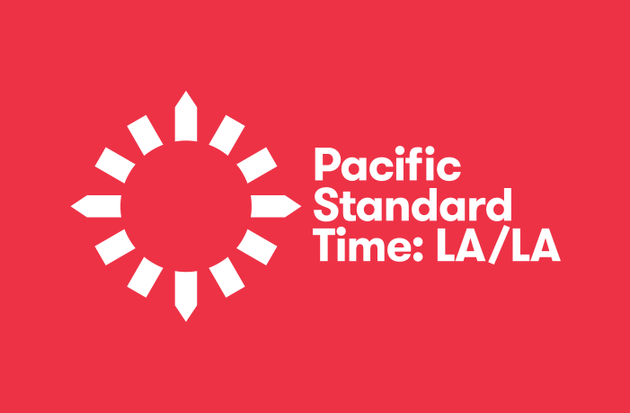Making Art Concrete: Works from Argentina and Brazil in the Colección Patricia Phelps de Cisneros
With this fifth posting, I continue to inform our online readers of the extraordinary exhibition Pacific Standard Time: LA/LA that offers thematically linked exhibitions and programs in a four-month-long, region-wide exploration of Latin American and Latino Art in dialogue with Los Angeles. Have a look at the below summary of Making Art Concrete: Works from Argentina and Brazil in the Colección Patricia Phelps de Cisneros at the J. Paul Getty Museum.

In the years after World War II, artists in Argentina and Brazil experimented with geometric abstraction and engaged in lively debates about the role of the art work in society. Some of these artists experimented with novel synthetic materials, creating objects that offered an alternative to established traditions in painting. They proposed these objects become part of everyday, concrete reality and explored the material and theoretical limits of that proposition. Combining art-historical and scientific analysis, experts from the Getty Conservation Institute and Getty Research Institute have collaborated with the Colección Patricia Phelps de Cisneros, a world-renowned collection of Latin American art, to research the formal strategies and material decisions of artists working in the concrete and Neo-concrete vein, resulting in the first comprehensive technical study of these works. Visitors will see a selection of works by artists including Raúl Lozza, Tomás Maldonado, Rhod Rothfuss, Willys de Castro, Lygia Clark, Hélio Oiticica, Gerardo de Barros, Hermelindo Fiaminghi and Judith Lauand alongside information about the now-invisible processes that determine the appearance of the works: supports, hanging devices, methods of paint application, and techniques of painting straight edges. A selection of historical documents will shed further light on the social, political, and cultural underpinnings of these artistic propositions. The curator is Aleca Le Blanc.
Bank of America is the presenting sponsor of Pacific Standard Time: LA/LA, with additional support provided through the Pacific Standard Time Leadership Council, a group of art supporters from across the region.
Bank of America is the presenting sponsor of Pacific Standard Time: LA/LA, with additional support provided through the Pacific Standard Time Leadership Council, a group of art supporters from across the region. Press materials in English, Spanish and Portuguese are available at www.pacificstandardtime.org/press
In our next posting, we will look at The Hammer Museum, Radical Women: Latin American Art, 1960-1985 from September to January 2018.
-
Hélio Oiticica, Sem título (Grupo Frente) (Untitled [Frente Group]), 1959/1991. Alkyd and oleoresin on wood and fiberboard (acrílico sobre contrachapado), 104 x 118 x 12.7 cm (40 15/16 x 46 7/16 x 5 inches), 1996.76. Courtesy of Colección Patricia Phelps de Cisneros
-
Rhod Rothfuss, Cuadrilongo Amarillo (Yellow rectangle), 1955. Alkyd and gouache on hardboard and paperboard (resina alquídica y gouache sobre madera aglomerada y carton), 37 x 33 cm (14 5/8 x 13 inches) The Museum of Modern Art. Promised gift of Patricia Phelps de Cisneros through the Latin American and Caribbean Fund in honor of Gabriel Pérez-Barreiro 2010.69.
-
Tomás Maldonado, Composición 208 (Composition 208), 1955. Oil and alkyd on canvas (óleo y resina alquídica sobre tela), 50.2 x 50.2 x 2 cm. Courtesy of Colección Patricia Phelps de Cisneros
-
Judith Lauand, Concreto 36 (Concrete 36), 1956. Alkyd on plywood (esina alquídica sobre madera aglomerada, 60 x 60 cm (23 5/8 x 23 5/8 inches). The Museum of Modern Art. Promised gift of Patricia Phelps de Cisneros through the Latin American and Caribbean Fund in honor of Robert Menschel & Janet Wallach 1996.37. Courtesy of Colección Patricia Phelps de Cisneros
-
Geraldo de Barros, Função diagonal (Diagonal function), 1952. Alkyd on hardboard (resina alquídica sobre madera aglomerada), 60.3 x 60.3 x 0.5 cm. Courtesy of Colección Patricia Phelps de Cisneros
-
Lygia Clark, Casulo no. 2 (Cocoon no. 2), 1959. Nitrocellulose on sheet metal (nitrocelulosa sobre chapa), 30 x 30 x 11 cm (11 7/8 x 11 7/8 x 4 5/16 inches). The Museum of Modern Art. Promised gift of Patricia Phelps de Cisneros through the Latin American and Caribbean Fund in honor of Kathy Halbreich 1999.65. Courtesy of Colección Patricia Phelps de Cisneros
-
Hermelindo Fiaminghi, Seccionado no. 1 (Sectioned no. 1), 1958. Alkyd on hardboard (resina alquídica sobre madera algomerada), 60 x 60 x 6 cm. Courtesy of Colección Patricia Phelps de Cisneros
-
Raúl Lozza, Relieve N° 30 (Relief no. 30), 1946. Oil, alkyd, pine resin, wax, and acrylic on wood and metal wire (oleo sobre contrachapado y metal pintado), 41.9 x 53.7 x 2.7 cm (16 1/2 x 21 1/8 x 1 1/16 inches). The Museum of Modern Art. Promised gift of Patricia Phelps de Cisneros through the Latin American and Caribbean Fund 1998.52. Courtesy of Colección Patricia Phelps de Cisneros
-
Willys de Castro, Objeto ativo (Cubo vermelho/branco), 1962. Oil on canvas on plywood (óleo sobre tela sobre contrachapado), 25 x 25 x 25 cm. The Museum of Modern Art, New York. Promised gift of Patricia Phelps de Cisneros through the Latin American and Caribbean Fund in honor of Tomás Orinoco Griffin-Cisneros. Courtesy of Colección Patricia Phelps de Cisneros




